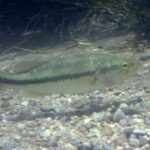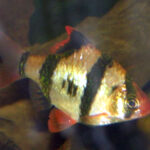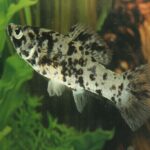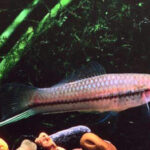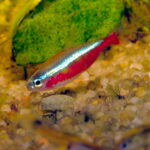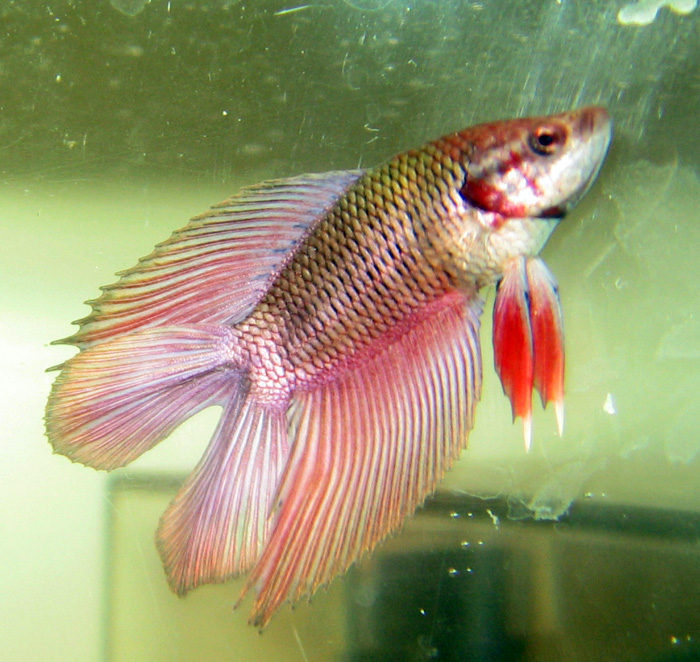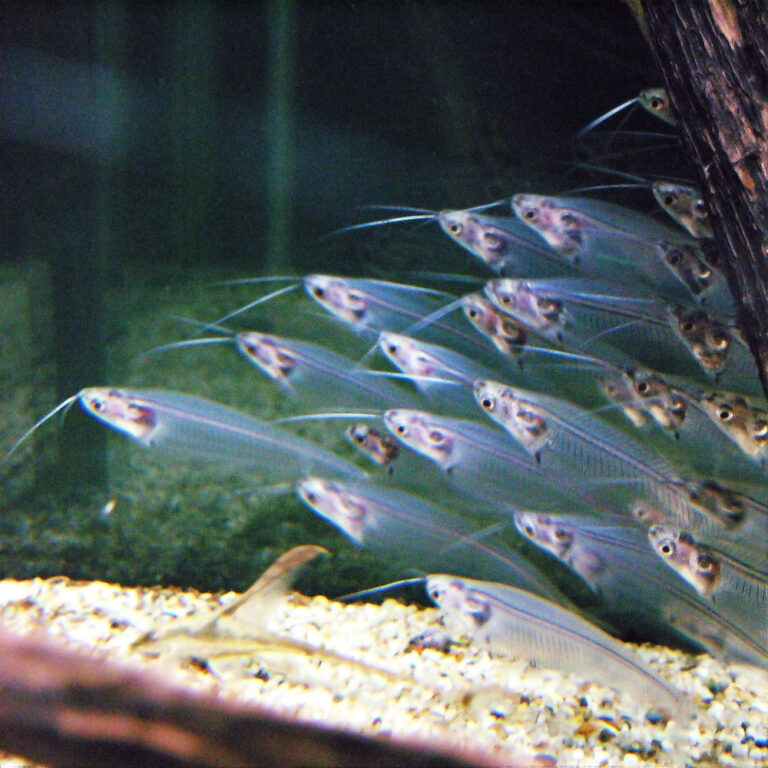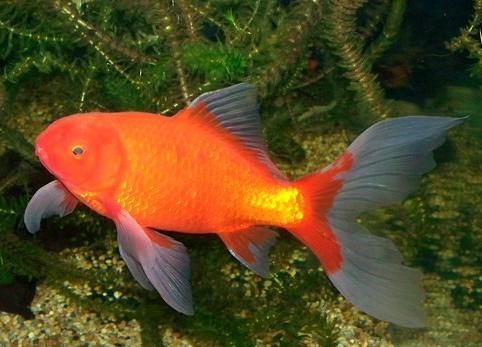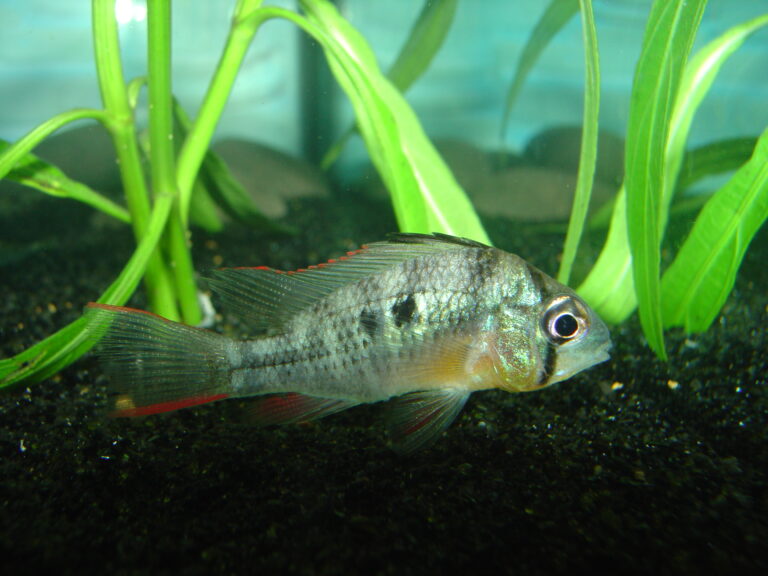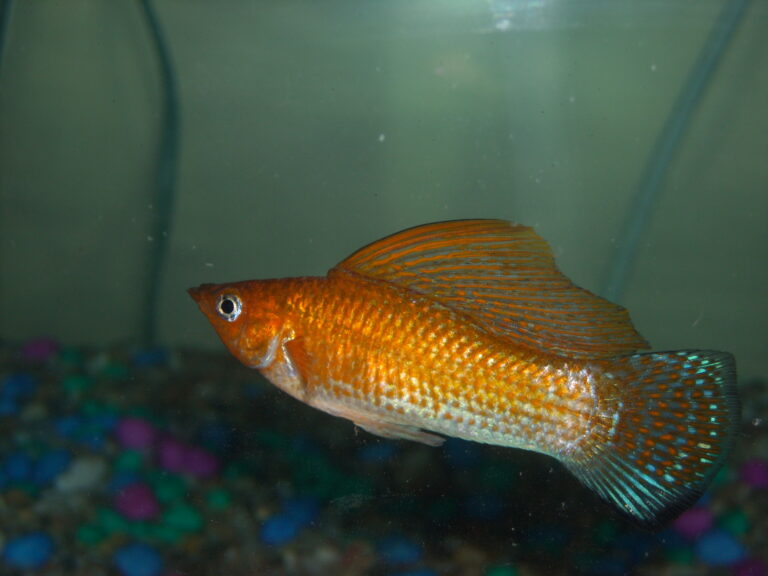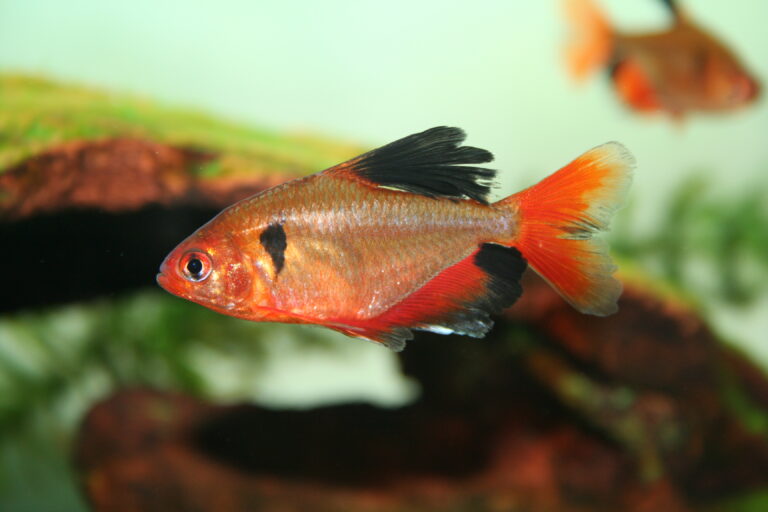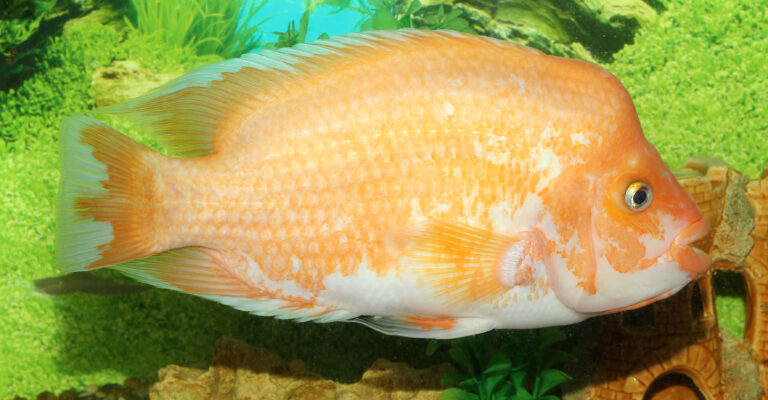Electric Blue Cichlid
By Ryan Maron | Last Modified: June 8, 2025

The Electric Blue Cichlid stands as one of the most striking and sought-after freshwater fish species in the aquarium trade, distinguished by its brilliant cobalt-blue coloration and robust territorial nature. Known scientifically as Sciaenochromis fryeri, this African cichlid species represents a fascinating example of evolutionary adaptation within the diverse cichlid family. Native to the rocky shores of Lake Malawi, the Electric Blue Cichlid plays a crucial ecological role as both predator and prey within one of Africa’s Great Lakes ecosystem. This species demonstrates remarkable behavioral complexity, exhibiting sophisticated territorial displays, intricate breeding rituals, and adaptive feeding strategies that have made it a cornerstone species for understanding cichlid evolution and lake ecosystem dynamics.
| Feature | Details |
| Common Name | Electric Blue Cichlid |
| Scientific Name | Sciaenochromis fryeri |
| Family | Cichlidae |
| Typical Size | 15-20 cm (6-8 inches), 150-300 grams |
| Habitat | Rocky shores and intermediate zones |
| Diet | Piscivorous predator |
| Distribution | Lake Malawi, East Africa |
| Conservation Status | Least Concern |
Taxonomy & Classification
The Electric Blue Cichlid belongs to the family Cichlidae, one of the most diverse and evolutionarily successful fish families in freshwater environments. Originally described by Ahl in 1926, Sciaenochromis fryeri represents a member of the haplochromine group, specifically within the “utaka” assemblage of Lake Malawi cichlids. The genus Sciaenochromis comprises several closely related species, with S. fryeri being the most widely recognized and commercially important member.
Phylogenetic studies have revealed that the Electric Blue Cichlid evolved through rapid adaptive radiation within Lake Malawi’s unique ecosystem. The species exhibits close genetic relationships with other Malawi haps, particularly within the predatory cichlid lineage that diversified approximately 2-4 million years ago. Molecular analysis indicates that S. fryeri shares common ancestry with species in the genera Protomelas and Copadichromis, forming a monophyletic group within the Lake Malawi species flock.
The taxonomic classification follows the established hierarchy: Kingdom Animalia, Phylum Chordata, Class Actinopterygii, Order Cichliformes, Family Cichlidae, Subfamily Pseudocrenilabrinae, Tribe Haplochromini, Genus Sciaenochromis, Species fryeri. This classification reflects recent molecular systematic studies that have refined cichlid relationships and established the distinct evolutionary position of Lake Malawi’s endemic fauna.
Regional variations in coloration and morphology have led to several described color morphs and potential subspecies, though taxonomic consensus remains under investigation. The species demonstrates remarkable phenotypic plasticity across different lake regions, with variations in fin coloration, body proportions, and behavioral characteristics that may represent incipient speciation events.
Physical Description
The Electric Blue Cichlid exhibits sexual dimorphism typical of many African cichlid species, with mature males displaying the characteristic brilliant electric blue coloration that gives the species its common name. Adult males reach lengths of 15-20 centimeters and display an intense metallic blue body coloration that appears almost luminescent under optimal lighting conditions. The blue pigmentation results from specialized chromatophores containing reflecting platelets that create iridescent effects across the fish’s flanks and dorsal surfaces.
Male specimens feature elongated dorsal and anal fins with vibrant blue coloration extending into the fin membranes. The caudal fin typically displays a distinctive lyre-shaped profile with extended upper and lower rays, creating an elegant swimming silhouette. Breeding males develop intensified coloration with deeper blue tones and enhanced fin extensions that serve as visual signals during territorial displays and courtship behavior.
Female Electric Blue Cichlids present more subdued coloration, typically exhibiting silver-gray body tones with subtle blue highlights along the dorsal region. Females generally remain smaller than males, reaching 12-15 centimeters in length, and possess more rounded body profiles adapted for egg production and maternal care. The sexual dimorphism becomes pronounced during breeding periods when males intensify their coloration while females develop breeding stripes and spawning coloration.
The species possesses a streamlined, fusiform body shape optimized for efficient swimming in open water environments. The head profile features a slightly pointed snout with a terminal mouth equipped with sharp, conical teeth adapted for piscivorous feeding. The eye placement and size reflect the species’ predatory nature, providing excellent binocular vision for prey detection and capture in the complex rocky environments of Lake Malawi.
Habitat & Distribution
The Electric Blue Cichlid occupies a restricted endemic range within Lake Malawi, the ninth largest lake in the world and the third largest of Africa’s Great Lakes. This ancient rift lake, formed approximately 1-2 million years ago, provides the exclusive habitat for S. fryeri and hundreds of other endemic cichlid species. The lake’s unique water chemistry, characterized by high pH levels (7.8-8.6), elevated mineral content, and exceptional clarity, creates optimal conditions for cichlid diversification and specialized ecological niches.
Within Lake Malawi, Electric Blue Cichlids inhabit the intermediate zone between rocky shores and open water, typically at depths ranging from 6-40 meters. This habitat preference places them in areas where rocky outcrops transition to sandy or mixed substrates, providing access to both territorial breeding sites and open-water feeding opportunities. The species demonstrates remarkable site fidelity, with individuals often maintaining territories around specific rock formations or cave systems.
The lake’s thermal stratification influences Electric Blue Cichlid distribution patterns, with the species showing preference for areas with stable temperatures between 24-28°C. Seasonal variations in water levels and thermal layers affect prey availability and breeding site accessibility, driving localized population movements and behavioral adaptations. The species exhibits particular abundance in areas with high structural complexity, where rocky formations provide shelter, breeding caves, and optimal ambush sites for predatory behavior.
Geographic isolation within different lake regions has contributed to population genetic structure and morphological variations. Northern, central, and southern lake populations show subtle differences in coloration intensity, fin morphology, and behavioral characteristics that reflect adaptation to localized environmental conditions and prey communities. This habitat specificity has made the Electric Blue Cichlid particularly vulnerable to environmental changes and habitat degradation within its limited range.
Diet & Feeding Behavior
The Electric Blue Cichlid functions as a specialized piscivorous predator within Lake Malawi’s complex food web, targeting juvenile cichlids, small cyprinids, and various invertebrate species. Adult specimens demonstrate remarkable hunting efficiency, employing ambush tactics from rocky crevices and territorial perches to capture unwary prey fish. The species’ diet composition varies seasonally and geographically, reflecting prey availability and competitive interactions with other predatory cichlids.
Juvenile Electric Blue Cichlids initially feed on zooplankton, small crustaceans, and insect larvae before transitioning to piscivorous behavior as they mature. This dietary shift typically occurs when individuals reach 8-10 centimeters in length, coinciding with territorial establishment and reproductive maturation. The transition involves morphological changes in jaw structure and tooth configuration that optimize prey capture and processing capabilities.
Hunting behavior involves sophisticated prey detection and capture strategies adapted to Lake Malawi’s clear water conditions. Electric Blue Cichlids utilize visual hunting techniques, positioning themselves strategically near feeding aggregations of smaller cichlids or schooling fish species. The predatory strikes occur with remarkable speed and precision, with successful captures often followed by prey manipulation to ensure optimal swallowing orientation.
Feeding intensity varies significantly with breeding status and territorial responsibilities. Breeding males often reduce feeding frequency while defending territories and courting females, relying on stored energy reserves to maintain condition during reproductive periods. This behavioral adaptation reflects the species’ evolutionary strategy of prioritizing reproductive success over individual growth and survival during critical breeding windows.
The species plays a crucial ecological role in controlling juvenile fish populations and maintaining community structure within Lake Malawi’s cichlid assemblages. Predation pressure from Electric Blue Cichlids influences prey species behavior, habitat selection, and evolutionary trajectories, contributing to the remarkable diversity observed in Lake Malawi’s endemic fish fauna.
Behavior & Adaptations
Electric Blue Cichlids exhibit complex territorial behavior that reflects sophisticated social organization and resource management strategies. Mature males establish and defend territories averaging 2-4 square meters around suitable spawning sites, typically cave systems or rocky crevices that provide protection for eggs and developing fry. Territorial boundaries are maintained through elaborate visual displays, including fin spreading, lateral presentations, and ritualized combat behaviors that rarely result in serious injury.
The species demonstrates remarkable behavioral plasticity in response to environmental conditions and social contexts. During non-breeding periods, Electric Blue Cichlids may form loose aggregations in neutral feeding areas, exhibiting reduced aggression and increased tolerance for conspecifics. This behavioral flexibility allows efficient exploitation of patchy prey resources while minimizing energetic costs associated with constant territorial defense.
Communication systems involve complex combinations of visual signals, body positioning, and subtle chemical cues that convey information about individual identity, reproductive status, and territorial ownership. Males develop enhanced coloration patterns during breeding seasons that serve as both mate attraction signals and territorial warnings to competing males. These visual displays are often accompanied by specific swimming patterns and fin positions that amplify signal effectiveness.
Stress response mechanisms in Electric Blue Cichlids include rapid color changes, altered swimming behavior, and physiological adjustments that optimize survival under challenging conditions. The species can quickly transition from brilliant breeding coloration to more cryptic patterns when threatened, demonstrating the adaptive value of chromatophore control in predator avoidance and social interactions.
Learning and memory capabilities allow Electric Blue Cichlids to develop site-specific knowledge of territory boundaries, optimal feeding locations, and potential threats. Individual recognition abilities enable complex social relationships and reduce unnecessary aggressive encounters between established neighbors, contributing to stable territorial arrangements within suitable habitat areas.
Reproduction & Life Cycle
The Electric Blue Cichlid employs a maternal mouthbrooding reproductive strategy characteristic of many African cichlid species, representing a highly evolved form of parental care that maximizes offspring survival in competitive lake environments. Breeding activities typically peak during warmer months when water temperatures reach optimal ranges of 26-28°C, though reproductive behavior can occur year-round under favorable conditions.
Courtship behavior involves elaborate male displays designed to attract females to carefully prepared spawning sites within defended territories. Males excavate and clean spawning pits or cave entrances, removing debris and creating optimal conditions for egg deposition. The courtship sequence includes intensified coloration, circular swimming patterns, and specific body orientations that signal reproductive readiness and territory quality to prospective mates.
Spawning occurs through a precise behavioral sequence where females deposit 20-60 eggs in the prepared spawning site before immediately collecting them in their mouths. Males simultaneously release sperm to fertilize the eggs during the collection process, ensuring high fertilization rates while minimizing exposure to potential egg predators. The entire spawning process typically requires 30-60 minutes and may be repeated with multiple females during optimal breeding periods.
Female Electric Blue Cichlids maintain the developing eggs and larvae in their buccal cavity for 18-25 days, depending on water temperature and individual condition. During this mouthbrooding period, females drastically reduce feeding activity and may lose 15-25% of their body weight while providing optimal conditions for offspring development. The female’s mouth provides protection, oxygenation, and temperature regulation essential for successful embryonic development.
Newly released fry measure approximately 8-12 millimeters in length and possess well-developed swimming and feeding capabilities. Maternal care continues for several days after release, with fry returning to the female’s mouth when threatened. Juvenile growth rates depend on prey availability and competitive interactions, with sexual maturity typically achieved at 12-18 months of age under optimal conditions.
Predators & Threats
Adult Electric Blue Cichlids face predation pressure from several larger piscivorous species within Lake Malawi’s ecosystem, including large catfish species, predatory cichlids such as Nimbochromis and Tyrannochromis species, and occasional bird predation from cormorants and other piscivorous waterfowl. Juvenile specimens are vulnerable to a broader range of predators, including medium-sized cichlids, invertebrate predators, and various opportunistic species that exploit vulnerable life stages.
The species has evolved several anti-predator adaptations that enhance survival in Lake Malawi’s complex predatory environment. Rapid color-changing abilities allow individuals to quickly adopt cryptic coloration when threatened, while exceptional swimming speed and agility facilitate escape responses. Territorial behavior provides additional protection through intimate knowledge of escape routes and refuge sites within defended areas.
Human-induced threats represent increasingly significant challenges for Electric Blue Cichlid populations throughout their limited range. Overfishing pressure targets both the species directly for the aquarium trade and indirectly through ecosystem-level impacts on prey communities and habitat structure. Collection methods often involve habitat destruction through rock removal and coral breaking that degrades essential breeding and territorial sites.
Water quality degradation from agricultural runoff, sewage inputs, and industrial activities poses long-term threats to Lake Malawi’s endemic cichlid fauna. Nutrient enrichment leads to algal blooms that reduce water clarity and alter fundamental ecosystem processes upon which Electric Blue Cichlids depend. Sedimentation from watershed erosion covers rocky habitats essential for breeding and territorial establishment.
Climate change impacts include altered precipitation patterns affecting lake levels, temperature regime changes that influence breeding timing and success, and potential shifts in prey community composition. These environmental pressures interact synergistically with direct human impacts to create cumulative stress on Electric Blue Cichlid populations throughout their endemic range.
Conservation Status
The Electric Blue Cichlid currently maintains a conservation status of Least Concern according to the IUCN Red List assessment, reflecting relatively stable population levels across its Lake Malawi range. However, this designation requires careful interpretation given the species’ extremely limited geographic distribution and increasing anthropogenic pressures affecting the entire Lake Malawi ecosystem. Population monitoring efforts remain insufficient to detect subtle population trends or localized declines that may be occurring within specific lake regions.
Recent scientific assessments indicate that while Electric Blue Cichlid populations remain relatively abundant in suitable habitat areas, the species faces mounting pressures from multiple sources that could rapidly alter its conservation outlook. The endemic nature of Lake Malawi’s cichlid fauna creates inherent vulnerability to ecosystem-level disturbances that could affect hundreds of species simultaneously.
Conservation efforts focus primarily on ecosystem-level protection through establishment of marine protected areas within Lake Malawi and international cooperation between Malawi, Tanzania, and Mozambique to manage shared water resources. These initiatives aim to preserve critical habitats, regulate fishing activities, and maintain water quality standards essential for cichlid community stability.
The aquarium trade presents both conservation challenges and opportunities for Electric Blue Cichlid populations. While collection pressure can impact local populations, successful captive breeding programs have reduced demand for wild-caught specimens and created awareness about Lake Malawi’s unique biodiversity. Sustainable collection practices and community-based management programs offer potential solutions that balance conservation needs with local economic benefits.
Research priorities include comprehensive population surveys, genetic diversity assessments, and long-term monitoring programs that can detect population changes before they reach critical levels. Understanding the species’ ecological requirements and response to environmental changes remains essential for developing effective conservation strategies that ensure long-term population viability within Lake Malawi’s rapidly changing ecosystem.
Human Interaction
The Electric Blue Cichlid holds significant economic and cultural importance for communities surrounding Lake Malawi, serving as both a subsistence and commercial fishery resource. Local fishing communities have developed traditional knowledge systems and sustainable harvesting practices that have historically maintained population stability while providing essential protein sources for regional nutrition security. This relationship between humans and cichlids reflects thousands of years of coexistence and resource utilization.
Commercial aquarium trade represents the most significant direct human interaction with Electric Blue Cichlid populations, with the species ranking among the most sought-after African cichlids in international markets. Wild collection operations employ specialized techniques designed to capture healthy specimens while minimizing habitat damage, though implementation of best practices varies considerably among different collection sites and operators.
Captive breeding programs have achieved remarkable success in producing Electric Blue Cichlids for the aquarium trade, reducing pressure on wild populations while maintaining genetic diversity through careful breeding stock management. These programs demonstrate the species’ adaptability to artificial environments and provide opportunities for research into cichlid behavior, genetics, and conservation biology.
Scientific research involving Electric Blue Cichlids has contributed significantly to understanding of cichlid evolution, speciation mechanisms, and adaptive radiation processes. The species serves as a model organism for studies of mate choice, territorial behavior, and evolutionary ecology, generating knowledge applicable to broader conservation and management challenges throughout the African Great Lakes region.
Educational and ecotourism activities centered on Lake Malawi’s unique cichlid fauna create economic incentives for conservation while raising awareness about the importance of freshwater biodiversity. These activities, including responsible angling practices, provide alternative livelihoods that reduce pressure on fish populations while generating revenue for conservation programs and community development initiatives.
Interesting Facts
The Electric Blue Cichlid possesses the remarkable ability to change its coloration within seconds, shifting from brilliant blue to pale gray or brown when threatened or establishing dominance hierarchies. This rapid chromatophore control represents one of the most sophisticated color-changing systems among freshwater fish species and serves multiple functions in communication, camouflage, and social interactions.
Laboratory studies have revealed that Electric Blue Cichlids can recognize individual conspecifics and maintain complex social memories that influence territorial boundaries and aggressive interactions. This cognitive ability, rare among fish species, allows for stable neighborhood relationships and reduced energy expenditure on unnecessary conflicts between established territory holders.
The species exhibits extraordinary parental care sophistication, with mouthbrooding females capable of selectively releasing and recollecting specific offspring based on environmental conditions and perceived threats. This behavioral flexibility maximizes offspring survival while allowing females to maintain some feeding opportunities during the extended brooding period.
Electric Blue Cichlids demonstrate remarkable site fidelity, with tagged individuals remaining within territories of less than 100 square meters for periods exceeding two years. This behavior contrasts sharply with many fish species and reflects the importance of intimate habitat knowledge for successful reproduction and survival in Lake Malawi’s competitive environment.
The species possesses specialized gill rakers that function as efficient filters for extracting small prey items from the water column, allowing exploitation of both planktonic and benthic food resources. This morphological adaptation contributes to the species’ ecological success and ability to maintain stable populations in diverse habitat types throughout Lake Malawi.
Genetic studies have revealed that Electric Blue Cichlid populations exhibit higher levels of genetic diversity than many other Lake Malawi endemics, possibly reflecting historical population connectivity and gene flow patterns that have maintained evolutionary potential despite geographic isolation within specific lake regions.
Frequently Asked Questions
How large do Electric Blue Cichlids grow in captivity?
Electric Blue Cichlids typically reach 15-20 centimeters (6-8 inches) in captivity, with males generally growing larger than females. Growth rates depend on tank size, water quality, diet, and population density. Optimal conditions allow individuals to reach adult size within 12-18 months, though maximum size may be slightly reduced compared to wild specimens due to space limitations and dietary differences in aquarium environments.
What tank requirements are necessary for keeping Electric Blue Cichlids?
Electric Blue Cichlids require minimum tank volumes of 200-300 liters for adult specimens, with larger systems preferred for breeding groups. Water parameters should maintain pH levels between 7.8-8.6, temperatures of 24-28°C, and excellent filtration to handle the species’ messy feeding habits. Rocky decorations and cave structures provide essential territorial boundaries and spawning sites, while regular water changes maintain optimal water quality for long-term health.
Are Electric Blue Cichlids compatible with other fish species?
Electric Blue Cichlids exhibit moderate to high aggression levels that require careful tank mate selection. Compatible species include other Lake Malawi cichlids of similar size and temperament, particularly haps and peacock cichlids that occupy different ecological niches. Mixing with Tanganyikan cichlids or community fish species typically results in aggression problems. Successful community tanks require adequate space, multiple territories, and similar water parameter requirements among all inhabitants.
What feeding schedule works best for Electric Blue Cichlids?
Adult Electric Blue Cichlids thrive on feeding schedules of 2-3 meals per day with high-quality cichlid pellets supplemented with frozen or live foods such as brine shrimp, bloodworms, and small fish. Juveniles require more frequent feeding of 3-4 times daily to support rapid growth rates. Overfeeding should be avoided as the species is prone to digestive issues and water quality problems. Fasting one day per week helps maintain digestive health and prevents obesity-related complications.
Conclusion
The Electric Blue Cichlid represents a remarkable example of evolutionary adaptation and ecological specialization within one of the world’s most diverse freshwater ecosystems. As both a keystone predator in Lake Malawi’s complex food web and a flagship species for African cichlid conservation, S. fryeri embodies the intricate relationships between biodiversity, habitat preservation, and sustainable resource management. The species’ continued survival depends on comprehensive conservation efforts that address both local ecosystem protection and global environmental challenges affecting the African Great Lakes region. Through careful management of human interactions, habitat preservation, and scientific research, the Electric Blue Cichlid can continue to serve as both an ecological indicator species and a source of wonder for future generations interested in freshwater biodiversity and other fascinating cichlid species.
Share The Article:
More Fish Species:
-
Black Neon Tetra
The Black Neon Tetra (Hyphessobrycon herbertaxelrodi) stands as one of the most distinctive freshwater fish species in the aquarium…
-
Double Tail Betta
The Double Tail Betta, scientifically known as Betta splendens, represents one of the most distinctive and captivating variants within…
-
Glass Catfish
The Glass Catfish (Kryptopterus bicirrhis) stands as one of Southeast Asia’s most distinctive freshwater species, renowned for its remarkable…
-
Comet Goldfish
The Comet Goldfish (Carassius auratus) stands as one of the most recognizable and widely distributed freshwater fish species in…
-
Bolivian Ram
The Bolivian Ram (Mikrogeophagus altispinosus) stands as one of South America’s most captivating cichlid species, representing a prime example…
-
Lyretail Molly
The Lyretail Molly (*Poecilia latipinna*) stands as one of the most recognizable and ecologically significant freshwater fish species in…
Discover
-
Baja Sportfishing: Marlin, Tuna, and Dorado Tactics
The first time I ventured into Baja sportfishing waters, I did almost everything wrong. I chartered a boat out…
-
Unlock Killer Saltwater Jigging Techniques: What I’ve Learned After Thousands of Drops
The first time I tried saltwater jigging, I was on my buddy Dave’s boat in the Gulf of Mexico…
-
Fishing Ethics: Conservation, Catch-and-Release, and Angler Responsibility
I was ten years old when my grandfather caught me throwing rocks at a school of bluegill near our…
-
New York Fishing License: Costs, Types & Where to Buy in 2025
Figuring out fishing licenses can be a headache, especially when you’re just eager to get out on the water….
-
Great Lakes Fishing Tactics That Nobody Talks About (But Should)
Ever notice how some anglers consistently haul in impressive catches from the Great Lakes while others struggle to get…
-
15 Panfish Fishing Secrets: Easy Catches for Beginners & Pros
You know what’s funny about panfish? These little fighters have probably hooked more new anglers than any other species,…
Discover
-
Best Time to Go Fishing: Timing Tips for Bigger Catches
If there’s one question I get asked more than any other, it’s about timing. When should you cast that…
-
Kayaking Fishing: Ultimate Guide for Water Adventurers
There’s something magical about gliding across the water in a kayak with a fishing rod in hand. The stealthy…
-
Silver Molly
The Silver Molly (*Poecilia sphenops*) stands as one of the most recognizable and adaptable freshwater fish species in both…
-
Serpae Tetra
The Serpae Tetra (Hyphessobrycon eques) stands as one of South America’s most recognizable freshwater aquarium species, distinguished by its…
-
Midas Cichlid
The Midas Cichlid (Amphilophus citrinellus) stands as one of Central America’s most recognizable and ecologically significant freshwater fish species….
-
Convict Cichlid
The Convict Cichlid (Amatitlania nigrofasciata) stands as one of the most recognizable and widely distributed freshwater fish species in…

